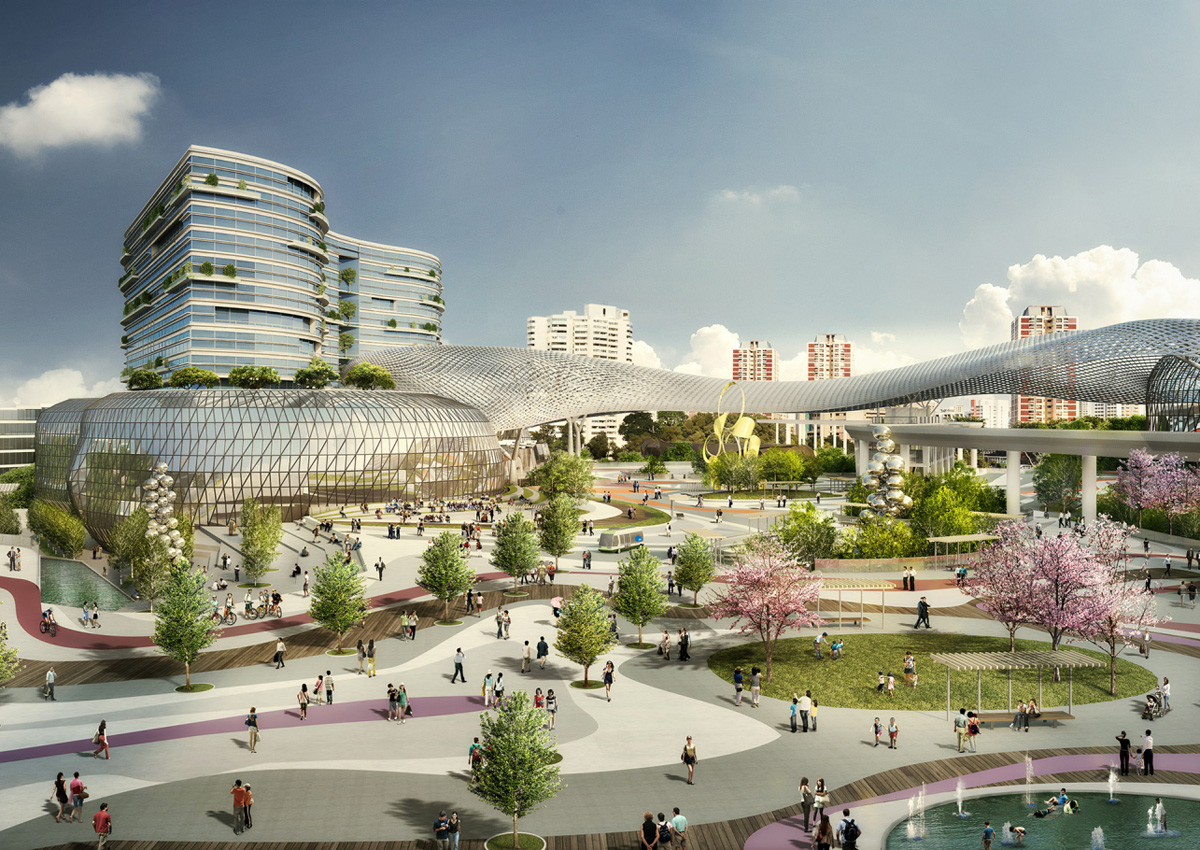After one-north, anothernext-generation industrial area is coming up in the west.
The Jurong West area is set to be home to Singapore’s largest living lab for the testing and development of new technologies, including self-driving vehicles, robots and other smart solutions.
The Jurong Innovation District (JID) – comprising Nanyang Technological University, CleanTech Park and the surrounding region – was one of three government measures announced yesterday to boost innovation.
“Our earlier industrial estates were developed for specific industries, focused mostly on production,” Finance Minister Heng Swee Keat said. “Today, however, learning, research, innovation and production are closely intertwined.”
All these different activities will be housed together at JID, forming an “industrial park of the future”, he added.
When fully developed, it could host over 100,000 people across living spaces, including student and soho residences, learning spaces and start-up and research facilities.
Observers such as Mr Nguyen Do Dzung, senior planner at CPG Consultants, noted that JID is in line with the Government’s long-term strategy of moving towards higher value-added economic activities.
“The global economic environment is not the best at the moment and new, exciting ideas (such as JID) are critical to ensure Singapore is competitive, an attractive place to do business and innovate as well,” he said.
Its creation is also in line with global trends, noted Ms Angelene Chan, chief executive of DP Architects, who cited the Guangzhou Knowledge City Core Area master plan in China which the firm worked on as an example.
There, the vision was for a city attractive to knowledge-based industries.
The idea of a holistic, sustainable environment catering to the modern demands of users will be attractive to firms.
JID will also be close to the lifestyle elements of the Jurong Lake District in Jurong East, she added.
JTC Corporation is constructing LaunchPad @ JID, a space where entrepreneurs, researchers and students can design, make prototypes and test their new creations.
It has also invited private sector technology owners to test and develop sustainable infrastructure solutions in the district.
The first phase of JID is targeted for completion around 2022.
For Mr Frank Phuan, chief executive of local solar energy developer Sunseap Group, the choice of Jurong is not surprising, given multiple technologies piloted in the area.
For example, Yuhua last year was the first estate to get smart-living features, including metering systems that give real-time information on electricity usage.
Sunseap and other private companies have been collaborating with the National University of Singapore’s Solar Energy Research Institute of Singapore in CleanTech Park as well.
“What’s exciting now is the potential scale, compared with smaller pilots so far,” he said.
“The technologies that prove successful can then be implemented in other districts.”
JID comes as a further transformation of Jurong, a swampland-turned-manufacturing hub.
Jurong Island, for example, has attracted over $47 billion worth of investments to date from over 100 global companies, said the Economic Development Board.
In the past five years, a slew of Government Land Sales in Jurong have allowed the region to take on the form of a self-sufficient urban system, said Mr Alan Cheong, Savills Singapore’s research head.
“To ensure new age companies find Jurong attractive, the entire ambience of the district has to be transformed further,” he said.
wrennie@sph.com.sg

This article was first published on March 25, 2016.
Get a copy of The Straits Times or go to straitstimes.com for more stories.







